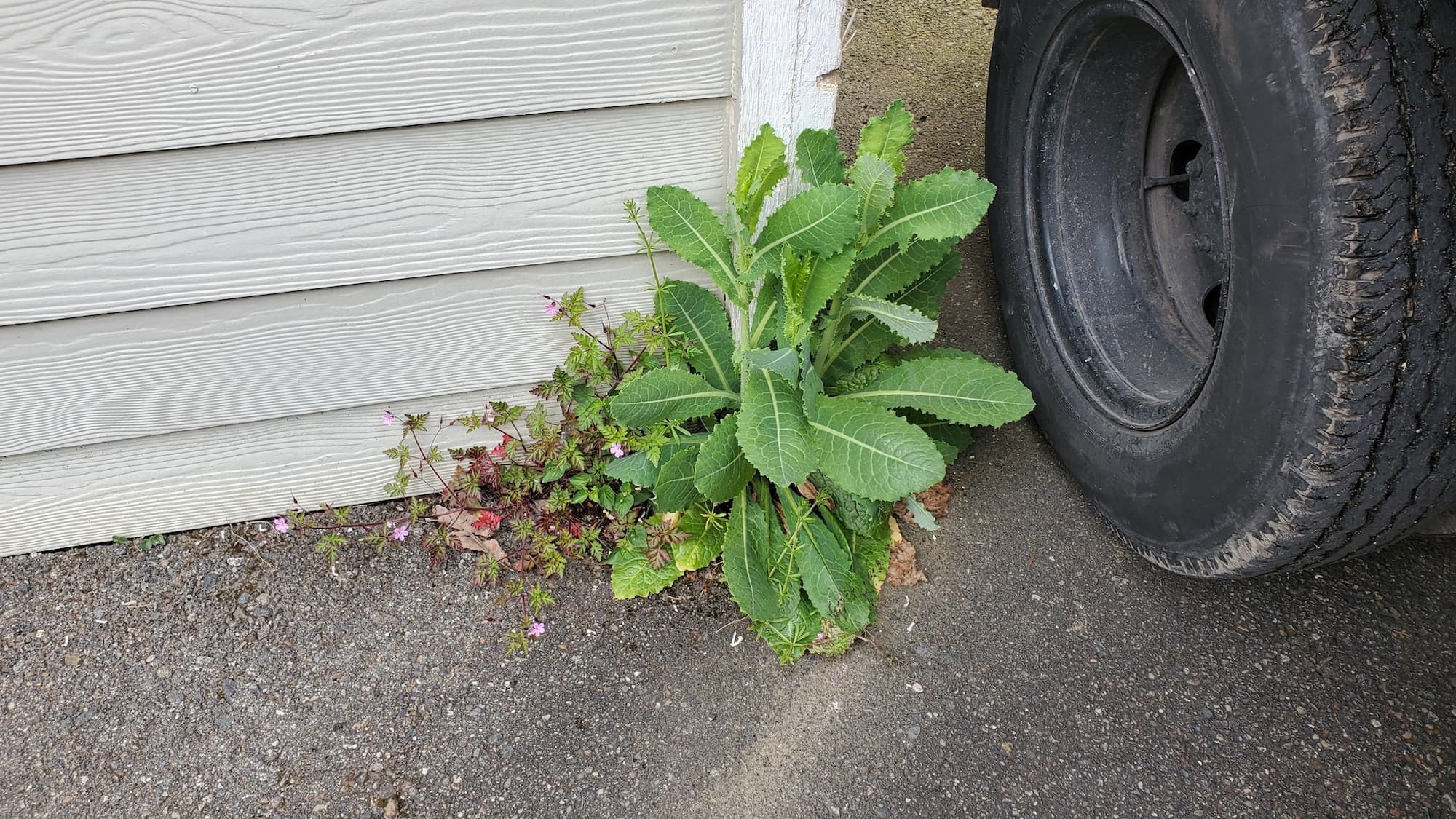West Seattle School campus invasive clearing
Homeowner’s Issue
West Seattle school grounds face a predictable mix of invasive pressures: Himalayan blackberry, English ivy, reed canarygrass, and mole-friendly moss. Our soils are a patchwork of compacted glacial till and sandy loam near the shore; both hold water after the long wet season and compact easily with foot traffic. Many campuses sit on slopes or next to ravines that funnel stormwater into low areas, which invites aggressive colonizers and erosion. Heavy winter rains combined with cool, shaded spots under big evergreens let moss and ivy spread rapidly, while south- and west-facing stretches dry and favor blackberries and brambles.
These problems show up as slippery play areas, sightline hazards, and repeated re-infestation after short-term fixes. Schools need durable solutions that meet district and HOA expectations for safety, accessibility, and curb appeal—often without harsh chemicals. Seattle’s summer watering limits and occasional drought advisories mean any restoration needs to be low-water and low-maintenance. Practical, chemical-free clearing plus targeted native replanting improves drainage, reduces future labor, and creates safer outdoor spaces for students and the community near Alki, Lincoln Park, or Admiral districts.
Our Quality Service
We remove invasives using hands-on and mechanical methods only—no herbicides. Typical tools include brushcutters, hand saws, loppers, shovels, root saws, and erosion-control materials like coir logs and jute netting. For large patches we phase work: initial cut-and-haul, follow-up root removal, and final bed restoration with mulch and native plugs.
A small campus or playground section is usually done in 1–3 days; larger properties or bluff-side jobs are staged over 1–3 weeks to control erosion and allow scheduled replanting. We work around school schedules, limit noisy work to agreed windows, and follow Seattle Public Utilities rules for green waste and composting. All work prioritizes worker safety, student access, and long-term landscape health.
Benefits: improved safety and sightlines, reduced maintenance time, better stormwater performance, and lasting curb appeal with native plantings that outcompete return of invasives.
What’s Included
- Site assessment and invasive species inventory.
- Cut, dig, and root excavation of targeted invasives (hand-pull and mechanical).
- Debris sorting: green waste for composting, large woody haul-away as requested.
- Erosion control where needed (straw, coir logs, wattles).
- Light restoration: mulching and planting recommendations or installation.
Options / upgrades
- Mulch + landscape fabric sections for heavy weed suppression.
- Native plant installation (low-water, pollinator-friendly species).
- Organic/manual weed control follow-ups (repeat hand-weeding, cutting cycles).
- Haul-away vs. city green-bin composting (we will advise cheapest, most sustainable option).
- Soil amendments (compost top-dress) and native seed installation.
Before & After / Expectations
- Mess & noise: cutting and hauling create brush piles and short-term noise; we tidy daily and haul per agreement.
- Access: clear, wide access to beds makes work faster and cheaper; we’ll note any gate or staging constraints in the estimate.
- Timelines: initial clearing, then 4–12 weeks of follow-up visits for root rechecks and re-sprout control.
- Disposal: we separate material for green-waste composting when feasible; large woody debris can be chipped on-site or hauled away.
- Replanting window: wait 2–4 weeks after major root disturbance to plant native plugs; slope stabilization may require immediate erosion control.
- West Seattle care tips: water new native plantings in the first two dry summers during the city’s recommended early-morning windows. Expect peak weed pressure in spring and fall—plan follow-ups then. Moss thrives in compacted, shaded areas; aeration, targeted light pruning, and top-dress compost help reduce it without chemicals. Ivy must be removed at the roots and monitored for several seasons.
FAQs
Q: Do you use herbicides?
A: No. We use mechanical, manual, and smothering techniques only—sustainable methods suitable for school sites.Q: Will clearing cause erosion on slopes?
A: We stage work and install immediate erosion controls (coir, wattles, mulch) and plant stabilizers when required.Q: How long before invasives return?
A: Expect re-sprouts in 6–12 months without follow-up; we recommend a 2-year monitoring plan with seasonal visits.Q: Can you work around school hours?
A: Yes. We schedule noisy work during agreed windows and can do low-impact tasks during school hours.Q: Do you handle permits or district approvals?
A: We advise on permit needs (large tree removals or shoreline work) and can communicate with district contacts, but permit fees are the client’s responsibility.
Call to Action
West Seattle campuses deserve durable, chemical-free invasive control that respects soil, slopes, and students. Book a free estimate—fast scheduling for Admiral, High Point, or Alki-area schools. We provide clear scopes, phased timelines, and local expertise you can trust.
Email: neatandtidyseattle@gmail.com
Phone: 206-538-9344
Mon–Sun: 9am–6pm — Licensed • Bonded • Insured










